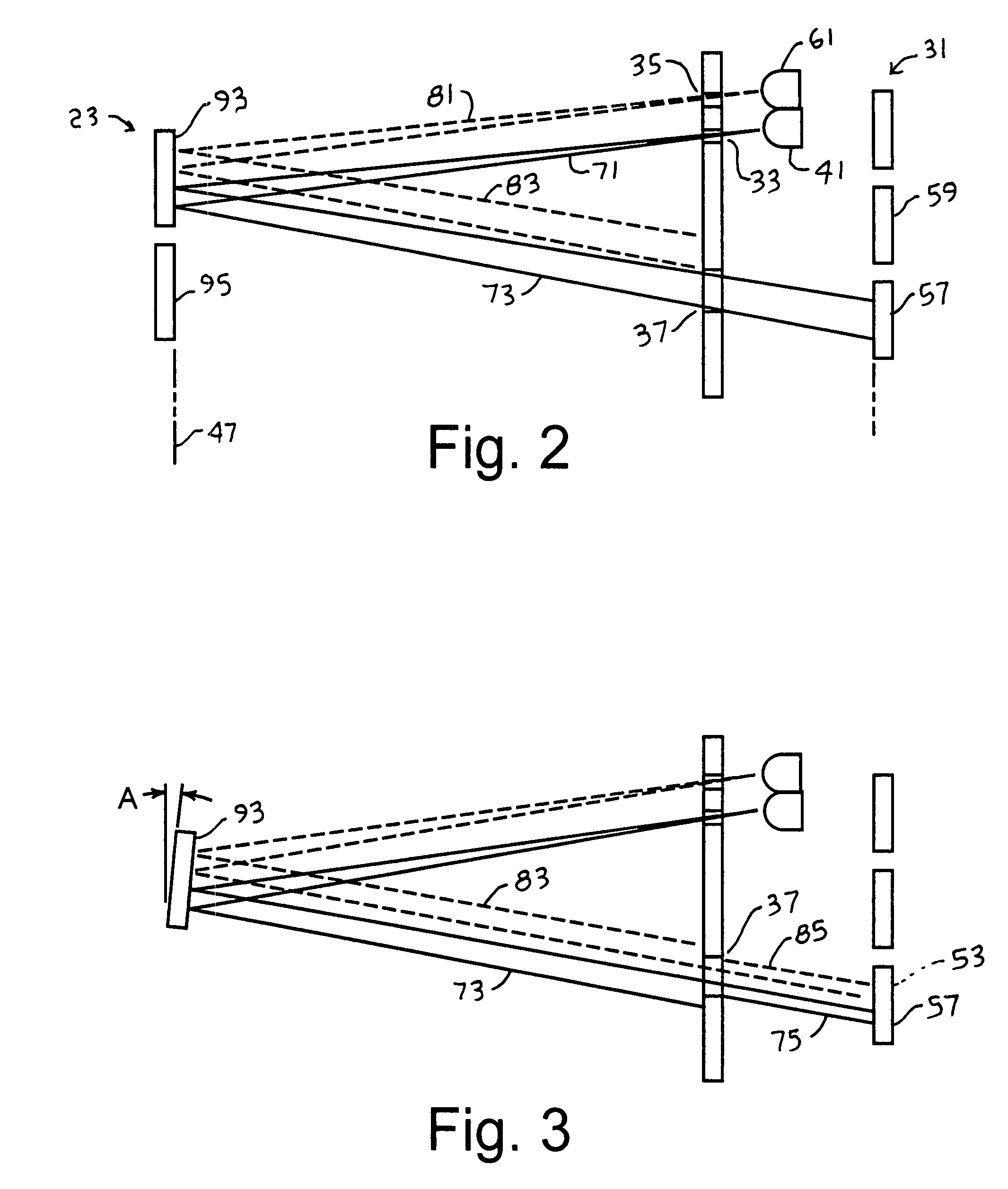Thermal displacement-based radiation detector of high sensitivity
a radiation detector and thermal displacement technology, applied in the field of radiation detection devices, can solve the problems of bulky radiation detection devices with high power consumption, major deficiencies in technology, and inability to detect high-sensitivity infrared cameras
- Summary
- Abstract
- Description
- Claims
- Application Information
AI Technical Summary
Benefits of technology
Problems solved by technology
Method used
Image
Examples
Embodiment Construction
[0025]The following detailed description is of the best currently contemplated modes of carrying out the invention. The description is not to be taken in a limiting sense, but is made merely for the purpose of illustrating the general principles of the invention, since the scope of the invention is best defined by the appended claims.
[0026]The present invention is related to an optical readout that has significantly larger dynamic temperature sensing range than that of conventional radiation detectors. The innovation is based on the incorporation of sensitive polymer molecular material with a highly efficient micro machined thermal mechanical micro mirror array that directly converts an incident infrared image into a visible image. This performance feature is highly desirable for thermograph and fire-fighting applications, for example. For many applications, including fire fighting, there is a need for a large dynamic range that often exceeds 400 C.°. The disclosed design functions ...
PUM
 Login to View More
Login to View More Abstract
Description
Claims
Application Information
 Login to View More
Login to View More - R&D
- Intellectual Property
- Life Sciences
- Materials
- Tech Scout
- Unparalleled Data Quality
- Higher Quality Content
- 60% Fewer Hallucinations
Browse by: Latest US Patents, China's latest patents, Technical Efficacy Thesaurus, Application Domain, Technology Topic, Popular Technical Reports.
© 2025 PatSnap. All rights reserved.Legal|Privacy policy|Modern Slavery Act Transparency Statement|Sitemap|About US| Contact US: help@patsnap.com



